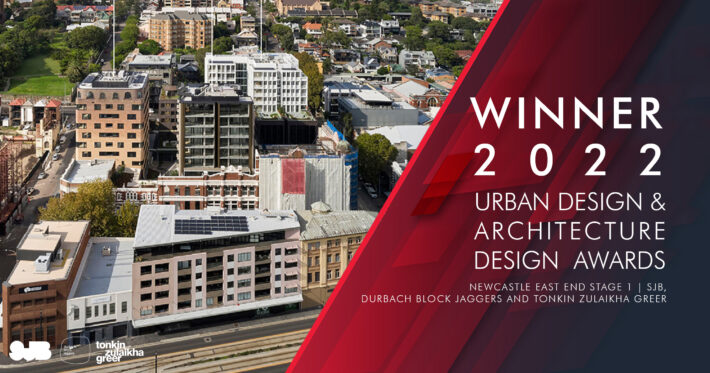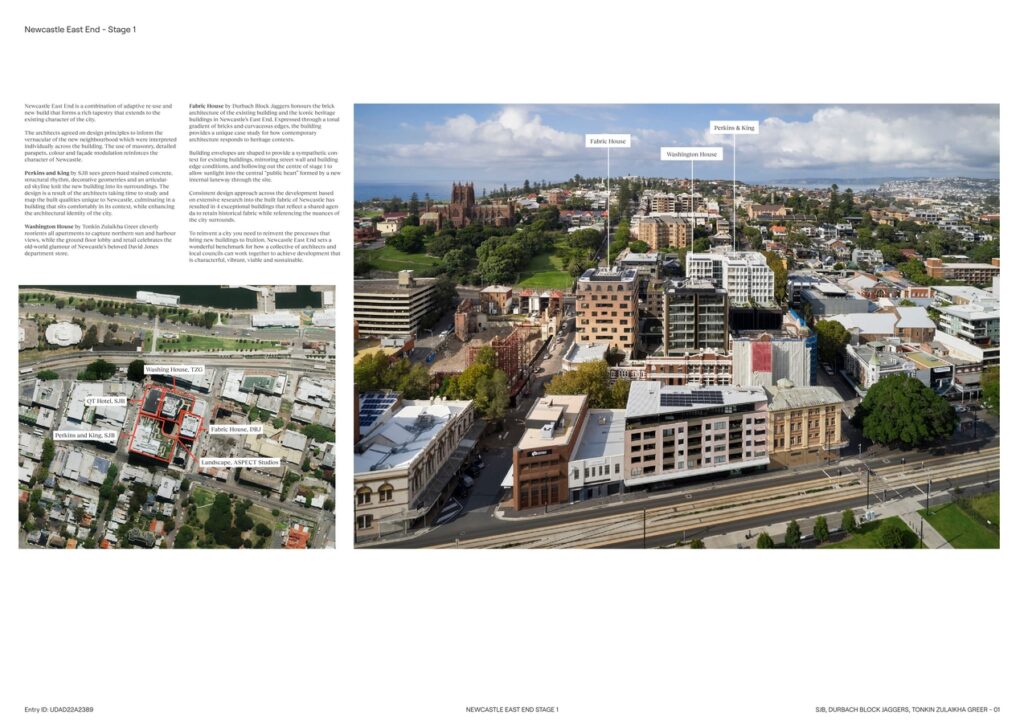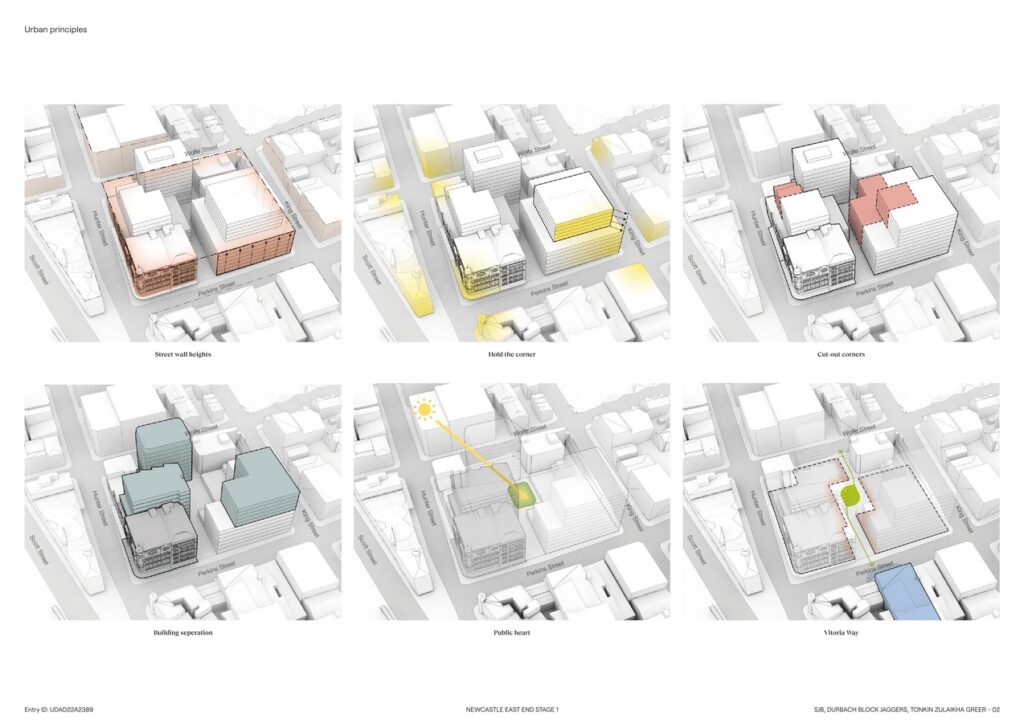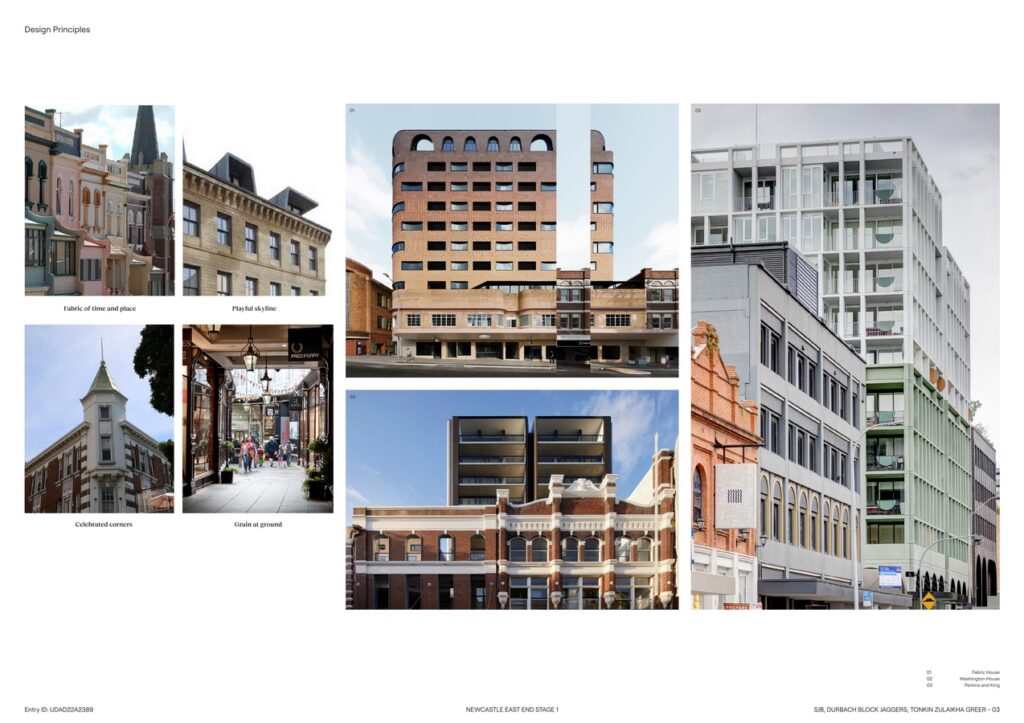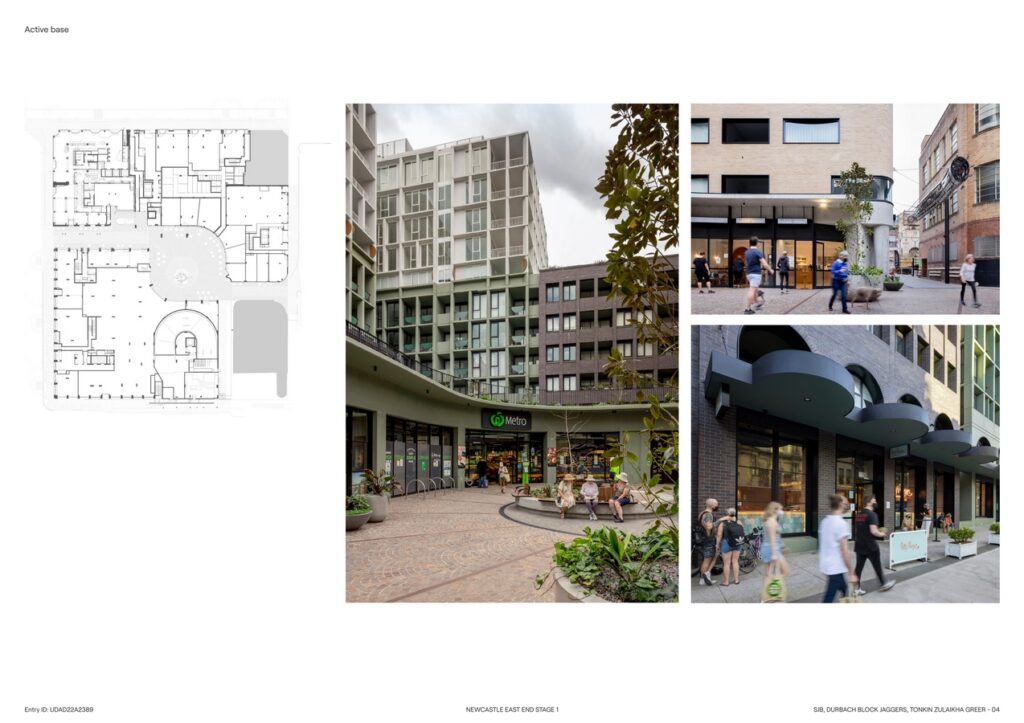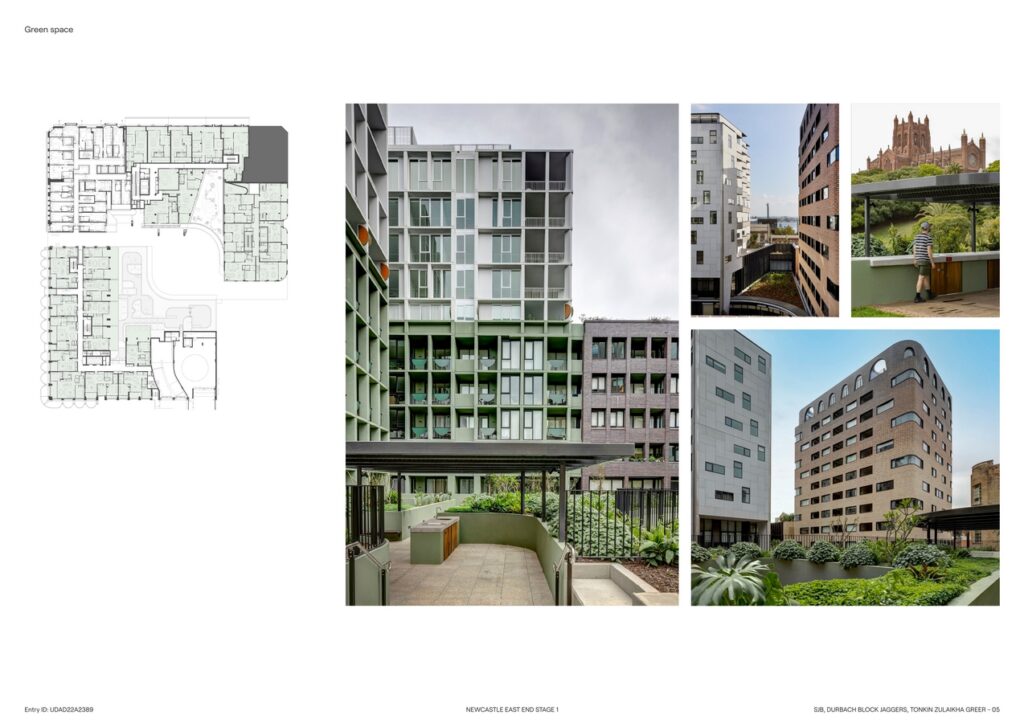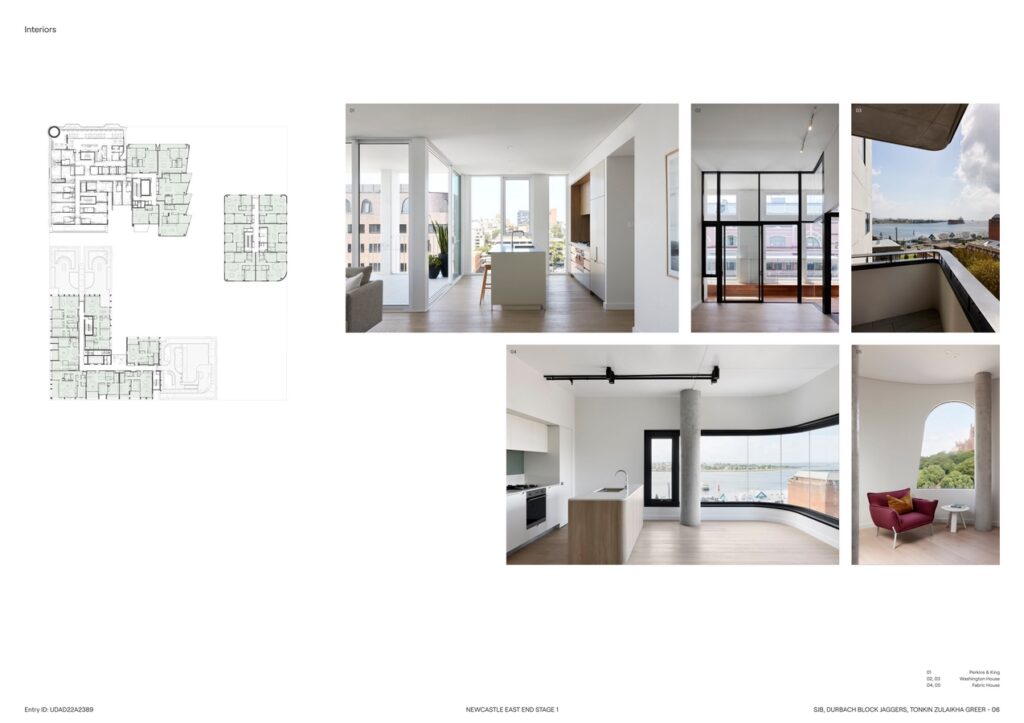Newcastle East End is a combination of adaptive re-use and new build that forms a rich tapestry that extends to the existing character of the city.
Urban Design & Architecture Design Awards 2023: Discounted Entries Open Now! Save $50
Super Early Discount – 1st May 2022 to 30th June 2022 – $199 = $149
Gold 🏆 Winner
Urban Design & Architecture Design Awards 2022
Newcastle East End Stage 1
Residential Architecture Built
Firm
SJB, Durbach Block Jaggers and Tonkin Zulaikha Greer
Architect/Designer
SJB, Durbach Block Jaggers and Tonkin Zulaikha Greer
Design Team
Adam Haddow (SJB), Jonathan Knapp (SJB), Neil Durbach (Durbach Block Jaggers), Camilla Block (Durbach Block Jaggers), David Jaggers (Durbach Block Jaggers), Tim Greer (Tonkin Zulaikha Greer), Emily Wombwell (SJB), Frankie Layson (SJB), Ksenia Totoeva (Tonkin Zulaikha Greer), India Collins (Durbach Block Jaggers), Adrian Strudwick-Barker (SJB), Rebecca Donoghue (SJB), Danny Chan (SJB), Victoria Judge (SJB), Bianca Caprara (SJB), Marcus Lewin (SJB), Ashleigh Elliot (SJB), Timothy Micali (SJB), Jack Edwards (SJB), David Maes (SJB), Joanne McGuinnes (SJB), Angela Chun (SJB), Elinor McNamara (SJB), Howe Law (SJB), Nemanja Stanar (SJB), Darryl Santos (SJB), Sarah Kirkman (Durbach Block Jaggers), Xiaoxiao Cai (Durbach Block Jaggers), Adam Hoh (Tonkin Zulaikha Greer), Kate Palmer (Tonkin Zulaikha Greer), Sara Valentin (Tonkin Zulaikha Greer), Todd Solman (Tonkin Zulaikha Greer), Edward Rosier (Tonkin Zulaikha Greer), Jenna Rowe (Tonkin Zulaikha Greer), John Taliva’a (Tonkin Zulaikha Greer), Kevin Lee (Tonkin Zulaikha Greer), Roger O’Sullivan (Tonkin Zulaikha Greer), Alison Osbourne (Tonkin Zulaikha Greer)
Location
Newcastle NSW Australia
Country
Australia
Photographer/Copyright
©Brett Boardman and Tom Roe
The iterative design excellence process for Stage 1 of the 4-stage master plan involved regular reviews by Newcastle Council’s Urban Design Consultative Group. The overarching site approach developed by the architects was based on their collective ambition to create a protected civic space in the centre of the site that would offer urban diversity, retain historic fabric and work in dialogue with the city surrounds.
Several planning constraints outlined in the original master plan were reformed so that the buildings could better respond to the immediate site and surrounding context. Building envelopes are shaped to provide a sympathetic context for existing buildings, mirroring street wall and building edge conditions, and hollowing out the centre of the bowl to allow sunlight into the central “public heart” formed by a new internal laneway through the site. The materiality and façade modulation complement the adjacent historic buildings on the site.
The architects agreed on design principles to inform the vernacular of the new neighbourhood which were interpreted individually across the building. The use of masonry, detailed parapets, colour and façade modulation reinforces the character of Newcastle.
Perkins and King by SJB sees green-hued stained concrete, structural rhythm, decorative geometries and an articulated skyline knit the new building into its surroundings. The design is a result of the architects taking time to study and map the built qualities unique to Newcastle, culminating in a building that sits comfortably in its context, while enhancing the architectural identity of the city.
Washington House by Tonkin Zulaikha Greer cleverly reorients all apartments to capture northern sun and harbour views, while the ground floor lobby and retail celebrates the old-world glamour of Newcastle’s beloved David Jones department store.
Fabric House by Durbach Block Jaggers honours the brick architecture of the existing building and the iconic heritage buildings in Newcastle’s East End. Expressed through a tonal gradient of bricks and curvaceous edges, the building provides a unique case study for how contemporary architecture responds to heritage contexts.
All four buildings share services and a basement, giving back space at the ground for a more active base. The new shared green space designed by ASPECT Studios across the ground plane and building courtyards on levels 1, 2 and 6 creates an urban backyard for residents and provides characterful passive surveillance to the open ground. Public furniture and a water feature create an ambient hum in the centre of the site, providing a backdrop to community life and enticing users to stop and stay awhile.


